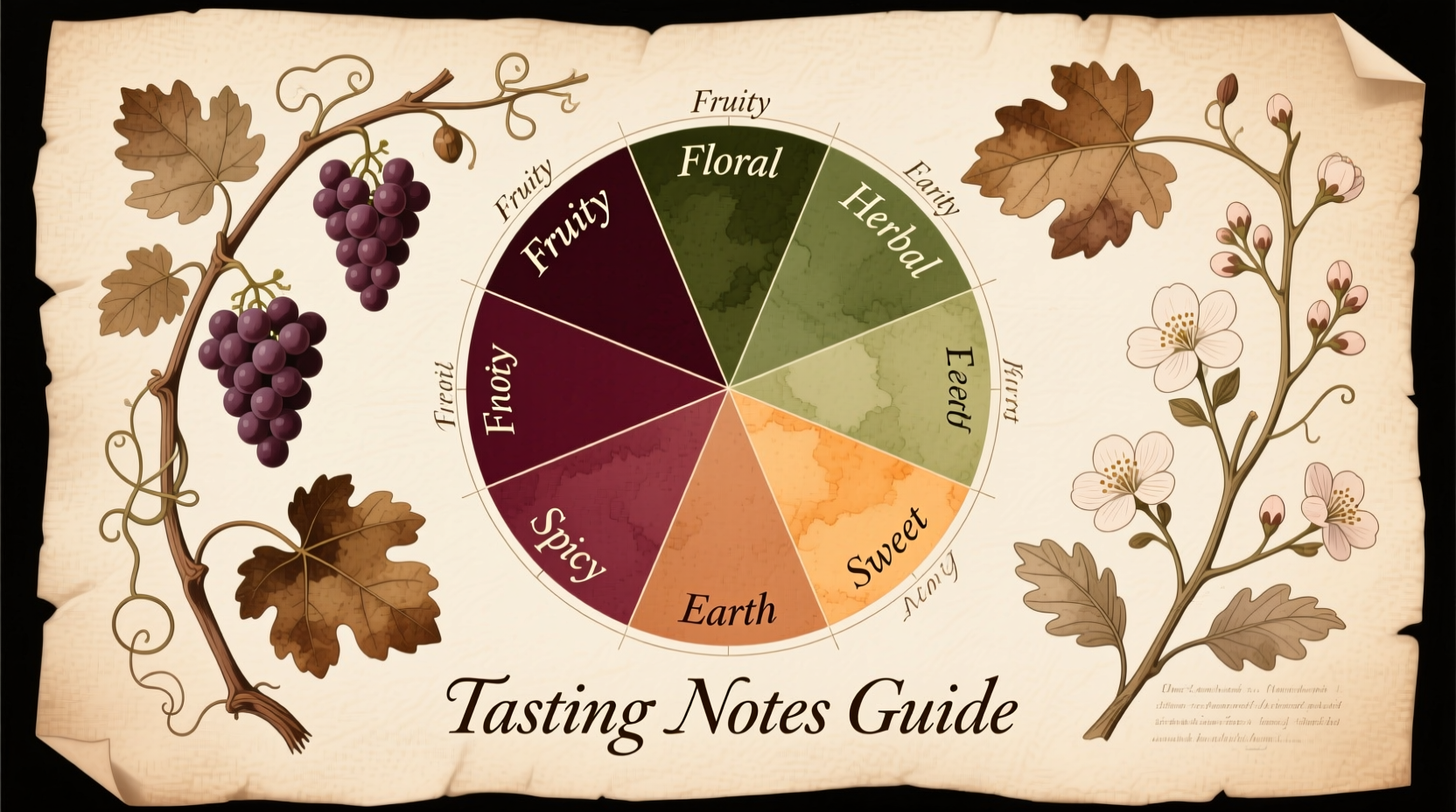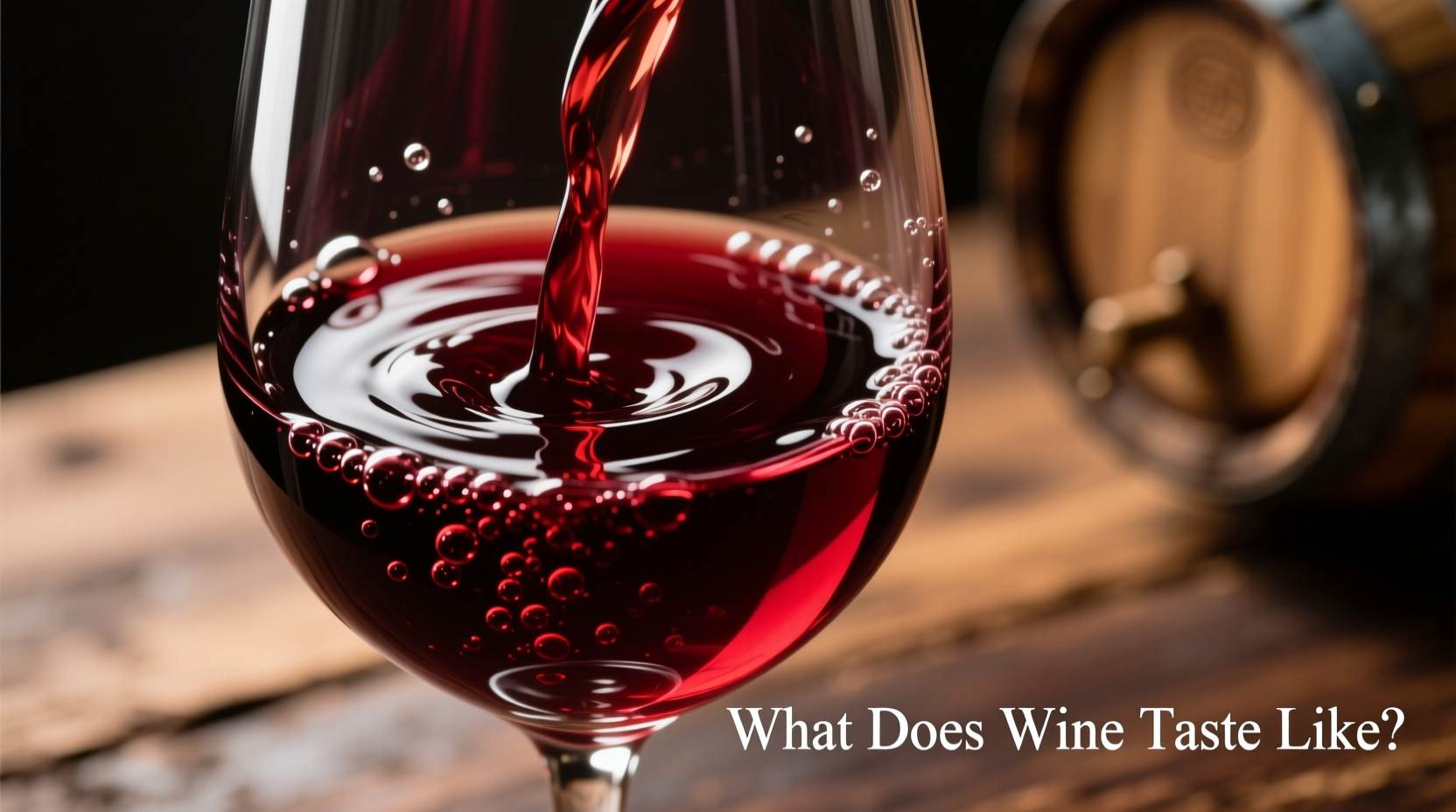If you've ever wondered what does wine taste like, the answer depends on the type, but most wines balance five core elements: sweetness, acidity, tannin (in reds), alcohol, and body. White wines often taste crisp with citrus or stone fruit notes, while reds typically feature berry flavors with earthy or spicy undertones. Understanding these basic components helps beginners identify what they're tasting.
Wine's flavor profile isn't as mysterious as it seems. Whether you're sipping a crisp Sauvignon Blanc or a bold Cabernet Sauvignon, every glass contains a combination of fundamental taste elements that create its distinctive character. This guide breaks down exactly what wine tastes like and how to identify those flavors yourself—no sommelier certification required.
The Five Essential Taste Components in Wine
Before exploring specific varieties, understand these universal elements that shape how wine tastes:
- Sweetness: From bone-dry to lusciously sweet, determined by residual sugar
- Acidity: Creates that refreshing "mouth-watering" sensation, prominent in whites
- Tannin: That drying sensation in reds from grape skins and seeds
- Alcohol: Contributes warmth and body, typically 11-15% ABV
- Body: The wine's weight on your palate—light, medium, or full
These elements interact to create wine's overall flavor impression. For example, high acidity can make a slightly sweet wine taste drier than it actually is, while tannins in red wine bind with proteins in your saliva, creating that characteristic astringency.
How Different Wine Types Taste: Reds, Whites, and Rosés
Each major wine category has distinctive flavor profiles that answer the question what does wine taste like in practical terms:
| Wine Type | Common Flavor Notes | Texture Characteristics |
|---|---|---|
| Cabernet Sauvignon | Blackcurrant, cedar, tobacco, mint | Full-bodied with firm tannins |
| Pinot Noir | Cherry, raspberry, earth, mushroom | Light to medium body, silky tannins |
| Chardonnay | Apple, citrus, vanilla (oaked), butter (malolactic) | Medium to full body, creamy texture |
| Sauvignon Blanc | Gooseberry, grapefruit, grass, tropical notes | Light body, high acidity |
| Rosé | Strawberry, watermelon, citrus, floral notes | Light body, refreshing acidity |
This comparison shows why understanding what different wines taste like helps you select bottles matching your preferences. A 2023 sensory analysis study from the University of California's viticulture program confirmed these characteristic flavor profiles remain consistent across most commercially available wines, though regional variations do exist.
Factors That Shape Wine's Flavor Profile
Several elements influence how wine tastes, explaining why two bottles of the same varietal can taste different:
Grape Variety
Each grape has signature characteristics. Riesling naturally expresses high acidity with floral notes, while Zinfandel delivers bold berry flavors with peppery undertones. The Wine & Spirit Education Trust (WSET) identifies over 1,300 commercially grown grape varieties, each with distinctive flavor compounds.
Climate and Terroir
Wines from cooler regions (like Germany's Mosel Valley) typically show higher acidity with greener fruit flavors, while warmer regions (California's Napa Valley) produce riper, fuller-bodied wines with darker fruit profiles. This climate impact is well-documented in research from the American Journal of Enology and Viticulture.
Winemaking Techniques
Stainless steel fermentation preserves crisp acidity in whites, while oak aging adds vanilla and baking spice notes. Malolactic fermentation converts sharp malic acid to softer lactic acid, creating that characteristic buttery note in many Chardonnays.

How to Identify What You're Tasting
Learning what wine tastes like to you involves active tasting. Follow these steps:
- Look: Observe color and clarity (deeper color often indicates more extraction)
- Swirl: Releases aromatic compounds
- Smell: Identify primary fruit notes before more complex aromas
- Sip: Note the balance of sweetness, acidity, and tannin
- Consider: How long do flavors linger? (Length indicates quality)
Beginners often struggle to identify specific flavors because they're searching for exact matches. Instead, focus on broader categories first—citrus vs stone fruit, red vs dark berry—then refine your descriptions. The Wine Flavor Thesaurus published by Oxford University Press provides standardized terminology that helps tasters move beyond "it tastes like wine" to precise descriptions.
Common Misconceptions About Wine Taste
Several myths persist about what wine tastes like:
- "All red wines are dry" - Many popular reds like Lambrusco and White Zinfandel have noticeable sweetness
- "Expensive wines always taste better" - Blind tasting studies consistently show price doesn't correlate with preference
- "You need special skills to appreciate wine" - Your palate is already trained to recognize flavors you enjoy
Context matters significantly in wine perception. Research from the Journal of Sensory Studies shows that the same wine rated differently when tasters believed it was expensive versus inexpensive, demonstrating how expectation influences what wine actually tastes like to you.
Practical Tips for Exploring Wine Flavors
Develop your understanding of what does wine taste like through these actionable steps:
- Start with flight tastings - Many wineries and wine bars offer small pours of multiple varieties
- Keep a tasting journal - Note basic impressions without overcomplicating
- Try food pairings - Acidic wines cut through rich foods; tannins soften with protein
- Compare similar styles - Taste Old World vs New World Pinot Noir to notice regional differences
Remember that personal preference trumps technical evaluation. If you enjoy a wine, that matters more than whether it fits textbook descriptions of what wine should taste like. Wine tasting is subjective, and your palate's reactions are valid regardless of "expert" opinions.











 浙公网安备
33010002000092号
浙公网安备
33010002000092号 浙B2-20120091-4
浙B2-20120091-4